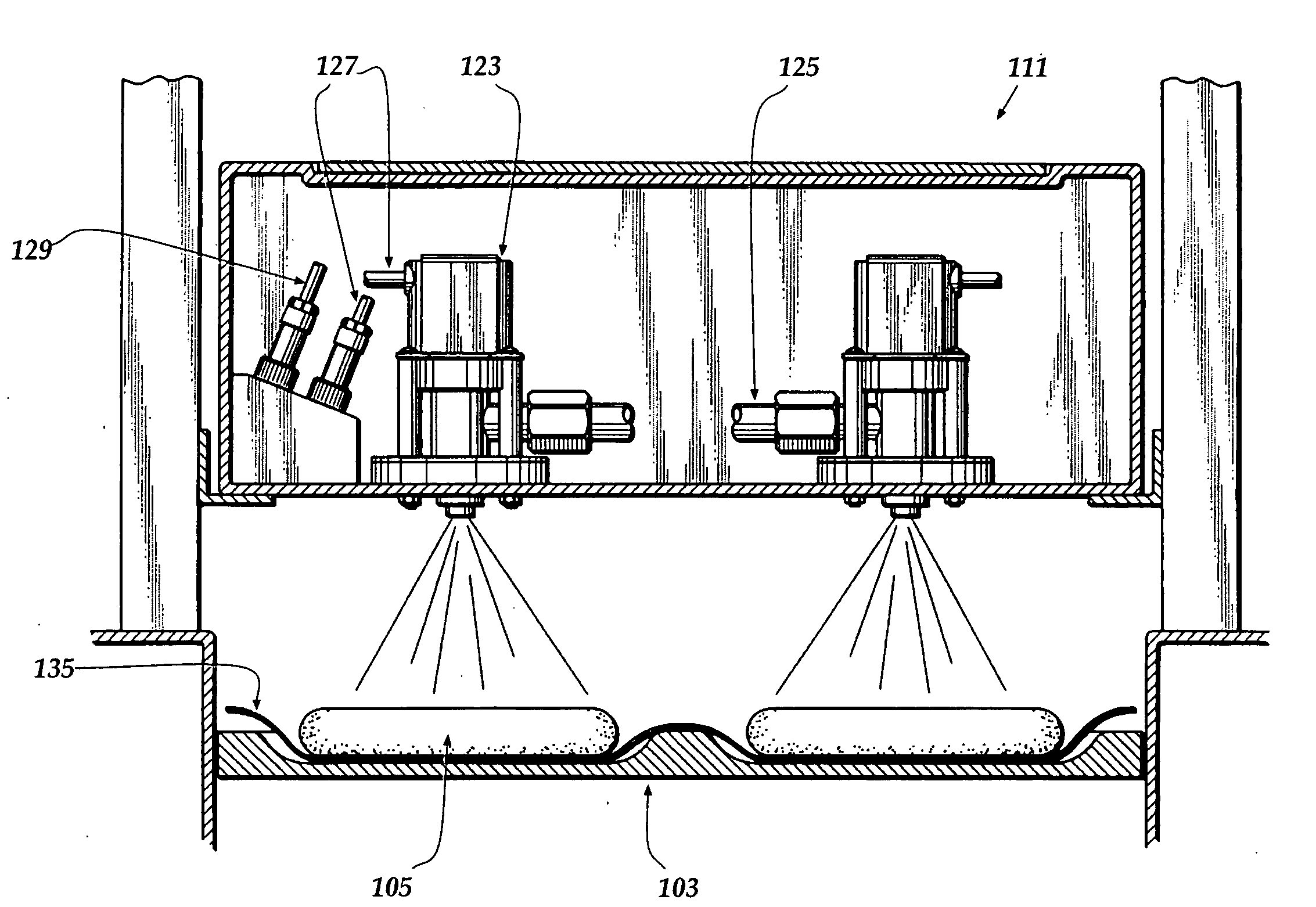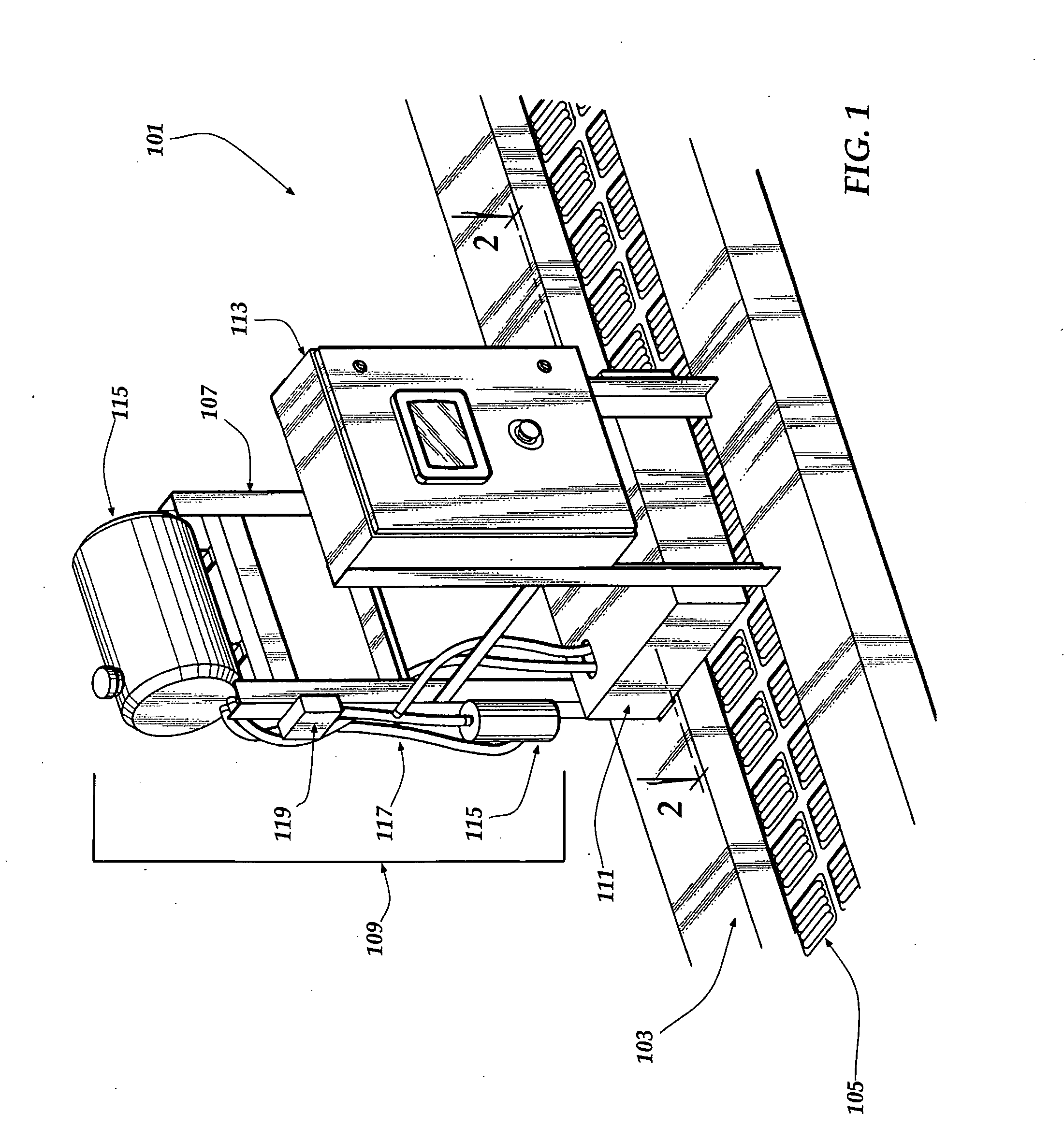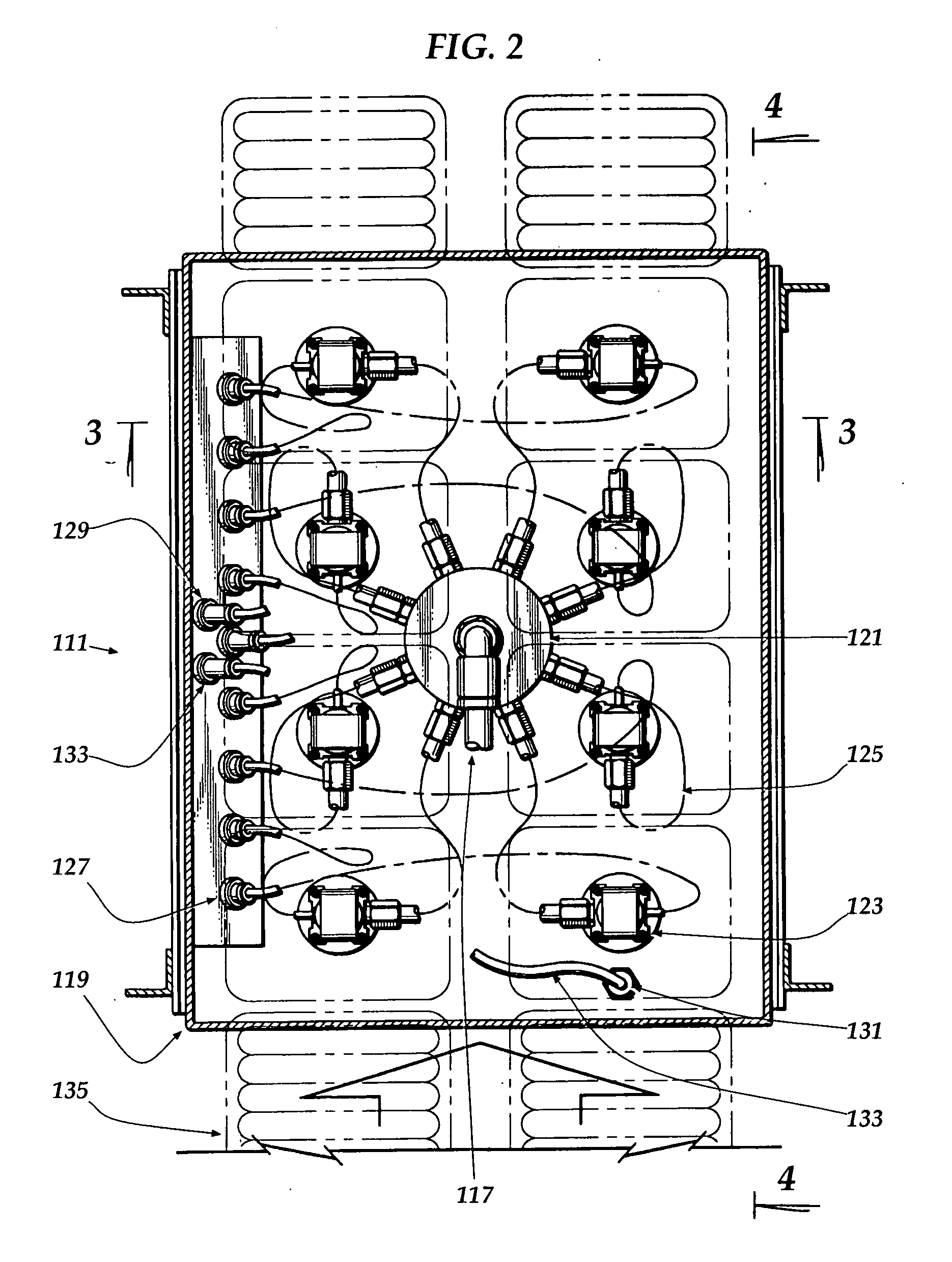Inline antimicrobial additive treatment method and apparatus
- Summary
- Abstract
- Description
- Claims
- Application Information
AI Technical Summary
Benefits of technology
Problems solved by technology
Method used
Image
Examples
Embodiment Construction
[0040]The preferred embodiment of the invention is designed for industrial food processing facilities but may be used in conjunction with standardized processing of materials and products other than foodstuff. The invention comprises an inline antimicrobial device 101 (“IAMD”) that applies precisely metered amounts of fluid additives to foodstuffs moving past the IAMD on a conveyor. IAMD 101 is typically used immediately prior to final product packaging and sealing steps.
[0041]Turning now to FIG. 1, IAMD 101 is designed to work in conjunction with a conveyor 103 that is part of a larger conveyor-based industrial food processing system that moves foodstuff 105 to and through various food processing stations such as IAMD 101. IAMD 101 comprises a frame 107, plumbing system 109, an applicator system 111, and a programmable logic controller 113 (“PLC”).
[0042]Plumbing system 109 further comprises one or more storage tanks 115, tubing 117, and one or more regulators 119. Storage tanks 115...
PUM
 Login to View More
Login to View More Abstract
Description
Claims
Application Information
 Login to View More
Login to View More - R&D
- Intellectual Property
- Life Sciences
- Materials
- Tech Scout
- Unparalleled Data Quality
- Higher Quality Content
- 60% Fewer Hallucinations
Browse by: Latest US Patents, China's latest patents, Technical Efficacy Thesaurus, Application Domain, Technology Topic, Popular Technical Reports.
© 2025 PatSnap. All rights reserved.Legal|Privacy policy|Modern Slavery Act Transparency Statement|Sitemap|About US| Contact US: help@patsnap.com



